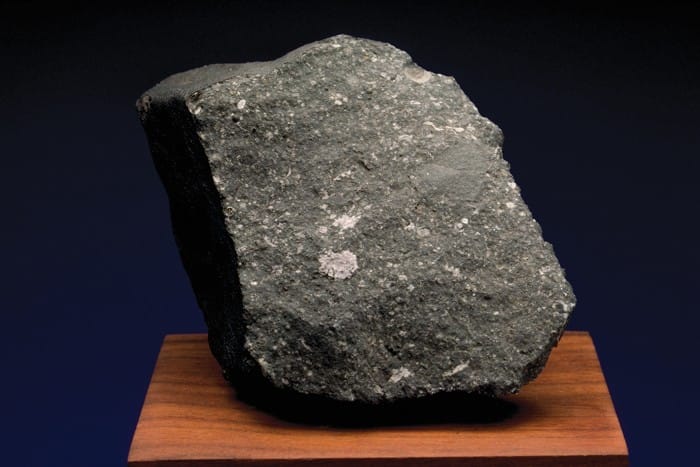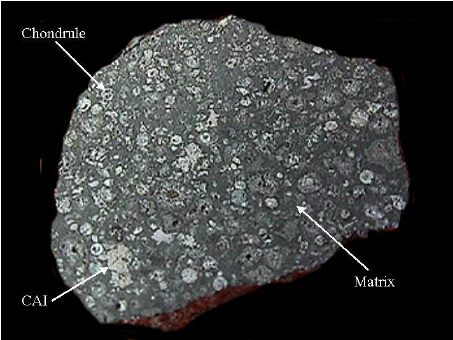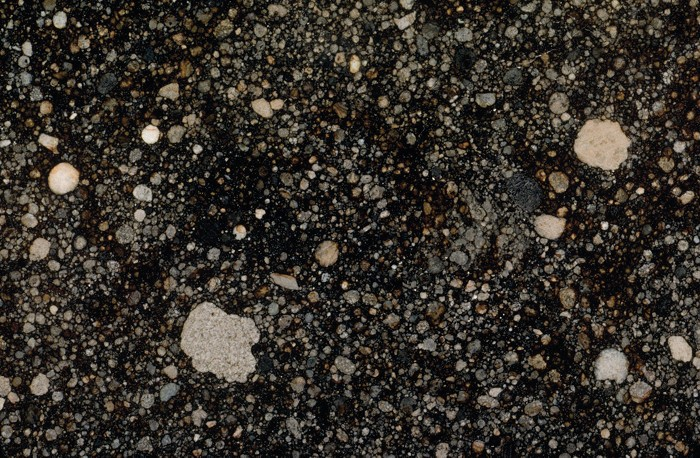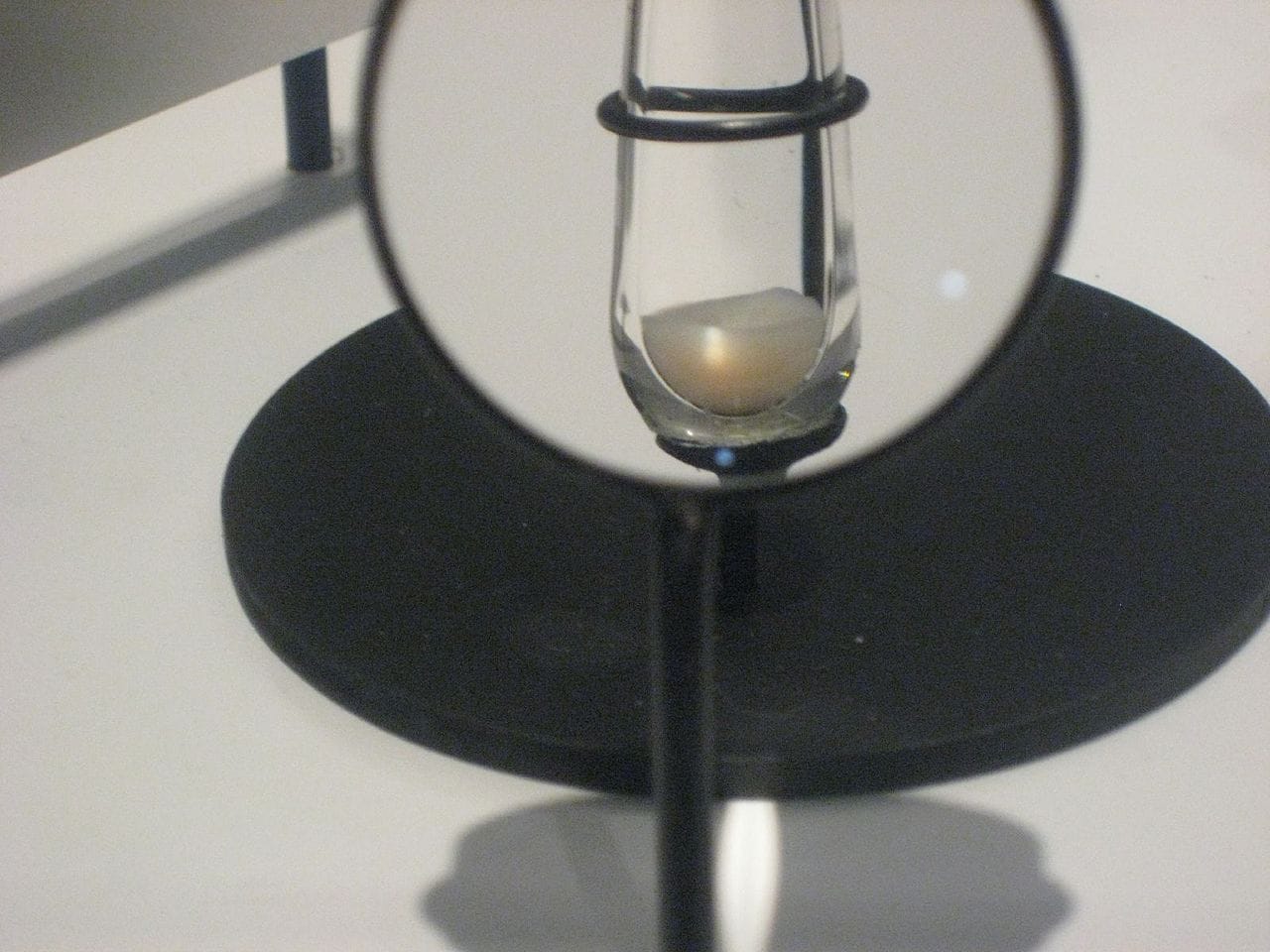The Oldest Rocks on Earth... Are Not from Earth

The oldest rocks on earth – are not from earth. The oldest minerals on Earth actually came from space and are far older than any rock that originated on this planet. Pictured above is a piece of the Allende meteorite, the largest carbonaceous chondrite ever found on Earth. The meteorite is a popular exhibit in the Hall of Geology, Gems, and Minerals at the Smithsonian’s National Museum of Natural History (NMNH).
The Allende meteorite, which came to Earth on February 18, 1969 near the village of Pueblito de Allende, due south of El Paso, Texas in the Mexican state of Chihuahua. It was about the size of a car before it hit our atmosphere and exploded into thousands of smaller pieces. After it broke up in the atmosphere, an extensive search for pieces was conducted and more than 2.2 tons of material were recovered.

Carbonaceous chondrites represent less than 5 percent of all meteorites observed to fall from space and are of special interest to scientists because they were not exposed to higher temperatures and thus are hardly changed by thermal processes. The availability of large quantities of samples of this scientifically important chondrite class of meteorite, far more than all of the previously known carbonaceous chondrite falls combined, has enabled numerous investigations by many scientists.
Fortuitously, the Allende meteorite fell shortly before the first rock samples from the moon were brought to earth by Apollo astronauts, and its pieces were analyzed by many scientists preparing to handle the moon rocks. It is often described as "the best-studied meteorite in history." The minerals, textures, chemical and isotopic composition of the rock fragments contain clues about early solar system history, including clues about the origin of Earth’s water.
Composition of the Allende Meteorite
Allende is composed of several different rock fragments that were assembled together on an asteroid ~4.6 billion years ago while our solar system was forming. It is the oldest rock type that has been dated isotopically.
When an Allende meteorite is cut and the surface is polished, the structure in the interior can be examined. The surface reveals a dark, fine-grained matrix embedded throughout with millimeter-sized, lighter-colored chondrules, tiny stony spherules found only in meteorites and not in earth rocks. Chondrules were formed from free-floating droplets in the solar nebula, the cloud of gas and dust from which our solar system was formed.
Also seen are white inclusions, up to several centimeters in size, ranging in shape from spherical to highly irregular. These are known as calcium-aluminum-rich inclusions, or "CAIs," so named because they are dominantly composed of calcium- and aluminum-rich silicate and oxide minerals. Both the chondrules and the CAIs formed during rapid heating events at the dawn of the solar system.

Like many chondrites, Allende is a breccia, and contains many dark-colored clasts or "dark inclusions" which have a chondritic structure that is distinct from the rest of the meteorite. Unlike many other chondrites, Allende is almost completely lacking in metallic iron and nickel.

According to Elizabeth Cottrell, Chair of the Department of Mineral Sciences at NMNH, “If you chopped the meteorite up in a blender and analyzed it, you would find it has the same elemental composition as the Sun and Earth and everything else that formed from the nebular components that our solar system came from. It contains all of the elements that make up everything we are.”
Tiny Diamonds Present in the Allende Meteorite
Some primitive carbonaceous chondrites contain pre-solar minerals, including moissanite (natural silicon carbide) and tiny nanometer-sized diamonds that apparently were not formed in our solar system. The tiny diamonds are part of the display of the Allende meteorite at NMNH which includes a small glass vial containing microscopic diamonds. These diamonds are found when a piece of the meteorite (or dust from cutting the meteorite) is dissolved in hydrofluoric acid, a seriously dangerous irritant to the mucosa and respiratory tract. Curiously, these diamonds are exceptionally tiny and abundant in primitive chondrite meteorites. The old song that "Diamonds are a Girl's Best Friend" probably would not apply to these diamonds that are not visible to the naked eye.

These presolar minerals were probably formed during the explosion of a nearby supernova or in the vicinity of a pulsating red giant before they got into the cloud of matter from which the solar system was formed. Such star explosions release pressure waves that can condense clouds of matter in their surroundings, leading to the formation of new ones, stars and planetary systems. At an estimated 12 billion years, they are by far the oldest things any human has ever touched!
Sources
James Tobin, More Than Dust in a Bottle, in Meteorite Times Magazine, November 1, 2020.
Brianna Barbu, Chemistry in Pictures: The oldest thing on Earth, in Chemical and Engineering News (c&en), December 7, 2023.
